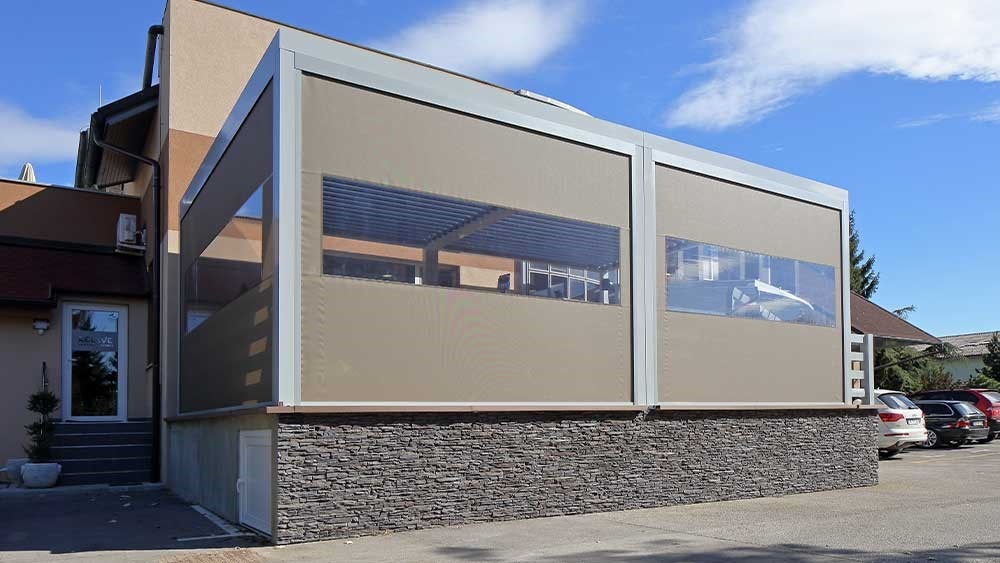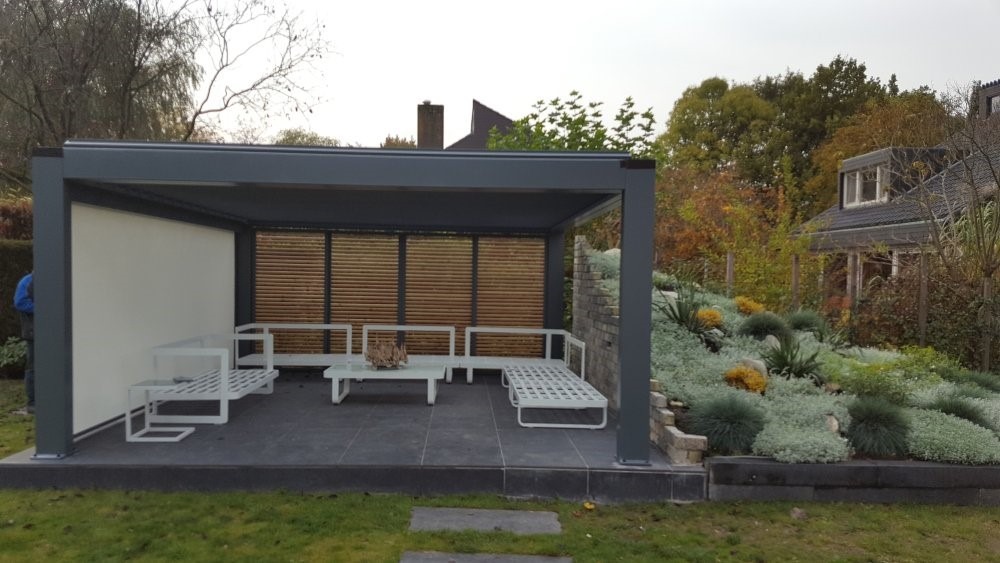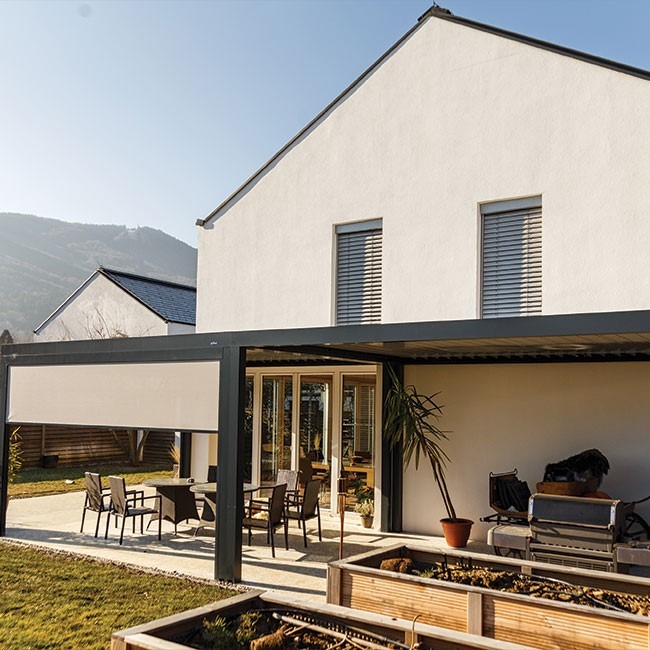
Typical Use Cases for Large Pergolas
There’s a lot of different use cases for a regular pergola. The list of useful features might also differ depending on some factors, including materials, additions to the construction, the main target use case, and so on. There’s also another parameter that changes the way you can interact with a pergola, and it’s size.
While you can’t call a regular pergola small, there’s a lot of examples when pergolas used for specific purposes are much bigger than the “standard” ones. The increase in size brings more covered ground, and thus more possibilities for different areas to be set up under said pergola.
Let’s look at some of the examples when it comes to large pergolas.

Our first example from Slovenia is nothing too fancy – a rectangular area with a concrete floor and a pergola to act as a roof. In this case the area itself looks more like a temporary refuge from bad weather, rather than a comfortable area for rest and recreation – but it’s still relatively large and mostly unoccupied. It won’t be too much effort to create something more comfortable in the free space left if you’ll want to do that.

Another example of a large pergola is placed in the backyard of a home in the Netherlands. This one has several different additions to it: one wall is covered with fabric to provide refuge from harsher winds, and the back wall is made of wooden planks to allow for plants to grow up in the air. The area inside of a pergola is also clearly made for recreation of sorts, but it still might be problematic to rest there properly if the wind’s direction is uneven or something like that.

This example of a large pergola from Denmark might be the most comfortable-looking so far, with properly placed walls and positioning. One wall is left wooden for plant growth purposes, and the other two are mostly covered with glass panels, allowing for the sun to come in normally, but limiting the impact of wind or rain at the same time. There’s also a large empty area underneath this outfitted pergola that can house a plethora of different objects, from chairs to sofas and mattresses.

Of course, we can’t forget about the combined pergolas as another way of increasing the amount of ground they can cover. This example from Slovenia shows at least two pergolas put together to create one large pergola that covers a lot of surface, making it possible to use it both as a storage area and as a table for breakfast, or any other purpose, since the amount of space available is impressively high.

Private houses aren’t the only ones that are taking the advantage of the ability to combine pergolas together to create one large pergola. In this example from Slovenia, we can clearly see two pergolas put together to act as a joint outdoor space for a restaurant. The addition of fabric for most sides of the pergola and the glass windows allows for the entire structure to feel almost like another room, but not indoors at the same time.
Speaking of large pergolas in general, all of the examples above are of one single type – pergola Agava, made from aluminum. Aside from the fact that there are a few of the joint pergola examples, there’s two different types of the largest pergola Agava models available – 240/36 and 240/60. Both of them can offer regular additions like water drainage grooves, motors for the roof configuration, and so on, and the main difference between them is their size:
- 240/36 pergola goes in only one configuration – 4,5 x 8 x 3 m tops.
- 240/60 pergola has two main configurations – 6 x 6 x 3 m and 5 x 8 x 3 m.
